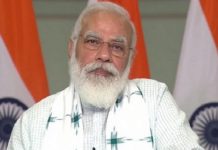Edited Excerpts from an interview

Any backgrounder or special reason for writing the short stories of The Other – Stories With A Difference?
I work a lot with young people — both in difficult circumstances as well as the very privileged. Much of my work is based on them, their voices, their concerns, their confusions. I am a very proficient eavesdropper and pick up on their conversations…What I write is not new information for my reader. Rather, a way to process that information, to empathise with the other in that situation and to re-assure them that they are not alone in their crises. And most of all, to empower them to be instruments of change. I think stories are a powerful tool for all of the above.
You write for the young adult. Have your own children been one of the motivating factors or do you feel today’s youngsters do need that focus?
My own children have been an important guide to me. And that continued after they grew up through my own interactions with a wide variety of young people. I have worked with over three lakh young people over the course of my career. Young adults today have very easy access to any kind of information… converting that raw information and processing it into knowledge is where a good story can prove most useful.
There is nothing called pure fiction. How many of these stories are based on real life happenings and incidents?
What I write is best described as ‘reality fiction’. Which is why the question I am most often asked is, “are these stories true?” The honest answer is yes, the situation is a common one. The broad strokes are reality, the characters and the exact detail is fiction. That is why this genre is so very powerful. In The Other, the stories Inner Circle, Outer Circle and Going off the Grid are both based on the myriad instances where the apathy of bystanders allows crime to happen. When CCTV clips show the crime being committed, there are people who watched it happen and didn’t lift a finger. These stories came out of an article on a study that had found India to be one of the most apathetic countries of the world. The story Best Friends Forever explores a real test of friendship in a very difficult circumstance. One, that must be occurring regularly. Grief (Is a Beast) is based on my own struggles with grief and loss. Because Superman had better Things to Do is based on my observations of young people’s attitudes towards those who have come through the EWS scheme as well as the ways in which we treat anyone who we consider The Other My stories and books on Kashmir are very much informed by my interactions with young people there, as well as the attitudes of young people in urban centres towards people in conflict zones.
Have you come across instances when children or say young adults have been betrayed by their own families?
I fear that a great damage is being done in the way children are imbibing hate. Parents are often careless in the way they ‘otherize’ a whole group of people. That is why I had a 12-year-old say, “I hate Muslims’. I am sure this wasn’t really his own opinion, but rather one that has been overheard around the family dining table. Heard hatred is a dangerous thing which we must all try and counter in our own ways.
In your interactions with the young adults, what comes across as the most hitting aspect?
Apathy and arrogance on one hand and a sense of hopelessness on the other hand. Both are very painful to see in young people who should have a fire in their belly.
Do you feel we Indians don’t really connect with the young in the family? And with that, bypass their emotional wants and aspirations.
I don’t think I am in a position to pass judgement as a whole. But certainly, I think families need to re-define what they consider as ‘protection’ of their children. Of course, all parents want their children to be safe. We would all love for our children to live in a perfect world where everyone is safe and happy. But as long as we have an imperfect world, we need to equip and empower our children. There is no point in cotton-wooling them.
Tell us an incident that touched you the deepest.
One of my best friends, an English girl, had come on her annual visit to India. We were both in college at the time. She returned from a holiday in Rajasthan and I noticed she was very subdued and there were bruises over her arms, over her back and stomach. She told me that she had been assaulted by a group of men. She begged me not to talk to my parents who were friends with her parents in England. It was only years later, when the post December 16 Nirbhaya marches were going on that I started to cry, realizing that my friend had been raped. Even in college, I hadn’t had a word for what had happened to her and I had kept quiet. I wrote an article on the need for stories for young adults around the issue of rape and was overwhelmed with responses from strangers and good friends who said that they too had been raped when young and never had the tools to talk to anyone about it or that they were told to keep it quiet. Through my tears, I promised that I would hush no more. I would give young people the words they needed, the confidence they needed to overcome even such a heinous crime. I wanted to show them that there is a light at the end of the tunnel, no matter how dark that tunnel may seem.
What’s your view on children and young adults living in our rural belts and with that deprived of the basics?
In Kupwara, Northern Kashmir, I was conducting a creative writing and storytelling workshop in a school. I told a story, the children greatly enjoyed it. But they were uncomfortable when I finished. When I probed them, one child asked if the story was true. Now this was a story about a bear who climbs onto the moon, so obviously, the answer was ‘no’. They gasped and almost physically recoiled as though I had just done a very bad thing.
I probed further and was surprised with their response, “If it’s not the truth, then it’s a lie and a lie is a very bad thing.” I told them, no, this was just a story. But they didn’t know what a story was. I had never interacted with children who didn’t know what a story was. Their only stories, songs and poetry were either in praise of Allah or the beauty of Kashmir. Other than that, their imaginations were frozen.
I know there are worse deprivations in life, but to me, the deprivation of imagination and story from a child was so unbearable. When I finally managed to get them to write stories of their own, the difference in the kids was palpable. The smiles were wider, the laughter louder. A teacher, with tears in her eyes, said to me that she’d never seen them so happy, so openly happy. That’s the power of stories.
letters@tehelka.com













